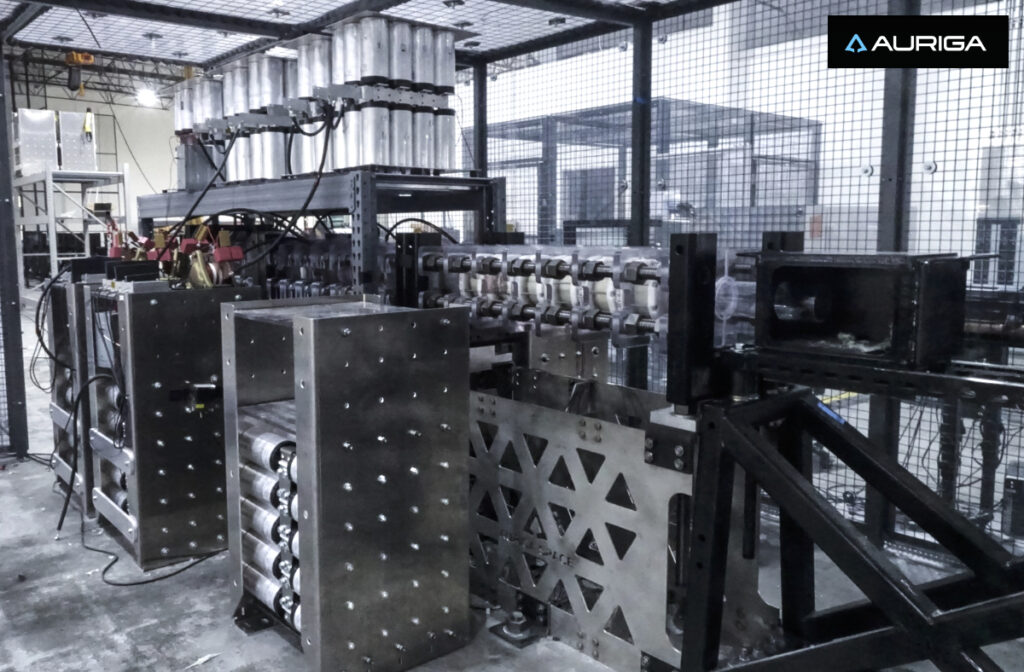
While U.S.-based companies are launching more payloads into orbit than ever before, they’re still limited by the inefficiency of conventional rockets—with rockets, most of the weight is in the propellant, not the payload, and a huge portion of the propellant is burned simply battling Earth’s gravity and atmosphere.

Auriga Space is aiming to change the launch game. Instead of a first-stage booster, the California-based startup is developing a launch track that will use electricity to power powerful magnets. Those magnets will accelerate a small rocket to over six times the speed of sound.

The track’s final segment rises on a steep ramp, enabling the rocket to exit at hypersonic speed and only ignite its engine in the final push to orbit. Beyond propellant savings, the entire ground-based architecture is entirely (and rapidly) reusable.
“Less than 2% of the mass of the rocket is what gets into space,” Auriga founder and CEO, Winnie Lai. said in a recent interview. “So our ultimate goal here is to make space launch more efficient, and by increasing efficiency, we believe we can bring down the cost, and we can also enable much more frequent launches.”
Electromagnetic launchers are not a new idea: Auriga’s architecture is reminiscent of a rail gun or a maglev. But Lai argues that recent advancements in power electronics, especially being able to operate at higher voltages and higher powers, finally make the concept technologically and commercially viable.
The company is fueling its ambitions with a previously undisclosed $4.6 million seed round that closed at the beginning of the year and $1.4 million in new AFWERX and SpaceWERX contracts. The capital round was led by European firm OTB Ventures, with participation from Trucks Venture Capital and Seraphim Space. Auriga has raised $12.2 million across VC and DoD grants to-date.
The final system architecture, including the tunnel length and rocket size, are still being finalized. Even a very long track will still impart high-G loads on the vehicle, which could limit the types of satellites it can carry. The company has performed some initial studies on the survivability of satellite components under high-G loads that indicate they can survive higher Gs than standard testing assumed, Lai said.
Auriga is also considering the opportunity to do “custom work,” like adding some structure support so objects can withstand the higher Gs, depending on what the customer needs.
“If you look at munitions, you also look at missile launches, those experience very, very, very high Gs,” Lai said. “So we’re very confident there’s payloads up there that could survive our launch environments, but that’s still yet to be defined. If we want to bring down the Gs, then we make the launcher longer.”
Netflix, ElevenLabs, Wayve, Sequoia Capital— these are just a few of the heavy hitters that have joined the Disrupt 2025 agenda. Auriga will go to market first with hypersonic ground testing: This most recent direct-to-phase II Small Business Innovation and Research grant from AFWERX (the company’s second) will be used to commercialize an indoor, lab-scale track called Prometheus early next year, and an outdoor accelerator for full-scale hypersonic test articles called Thor. (The orbital launcher is dubbed Zeus.)
Customers tell Lai that the lack of affordable, on-demand test infrastructure is one of the main challenges in advancing hypersonic development. Prometheus and Thor aim to fill that gap and provide a market capability that is sorely lacking: customers will be able to perform multiple tests on the same test article under different flight conditions, at a lower cost and higher cadence than what’s currently available. It can also perform a number of different tests, like weather testing, aerodynamic tests, and impact testing using the same underlying architecture.
The company is also trying to address the demand from the U.S. Space Force for “responsive” launch, or the ability to launch payloads to orbit with little to no advance notice. While there have been some impressive demonstrations of responsive launch in the past 12 months, with companies like Firefly Space launching a rocket with a 24-hour notice, Auriga wants to shrink that time to a matter of minutes.
“We call an Uber, and we expect the Uber to show up in a matter of minutes,” Lai said. “I think that should be the case for space, as well.”
